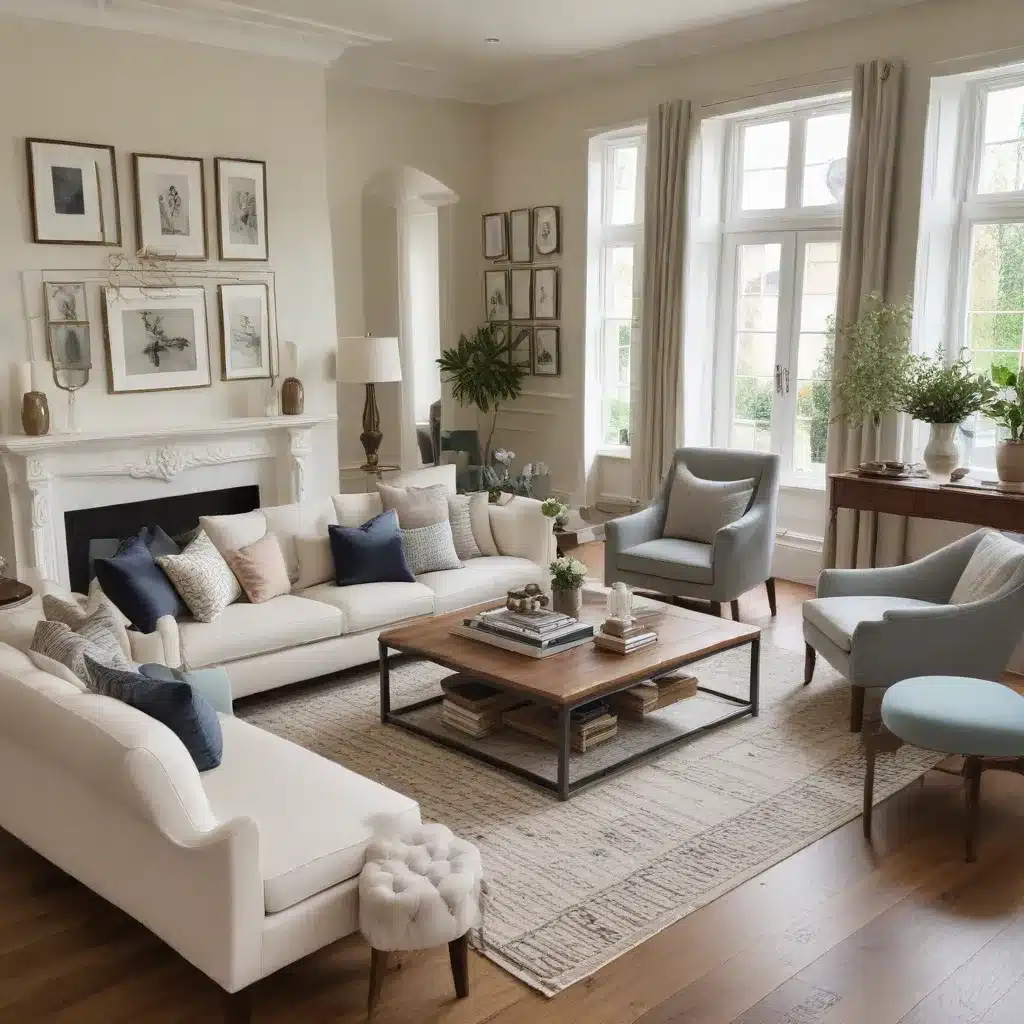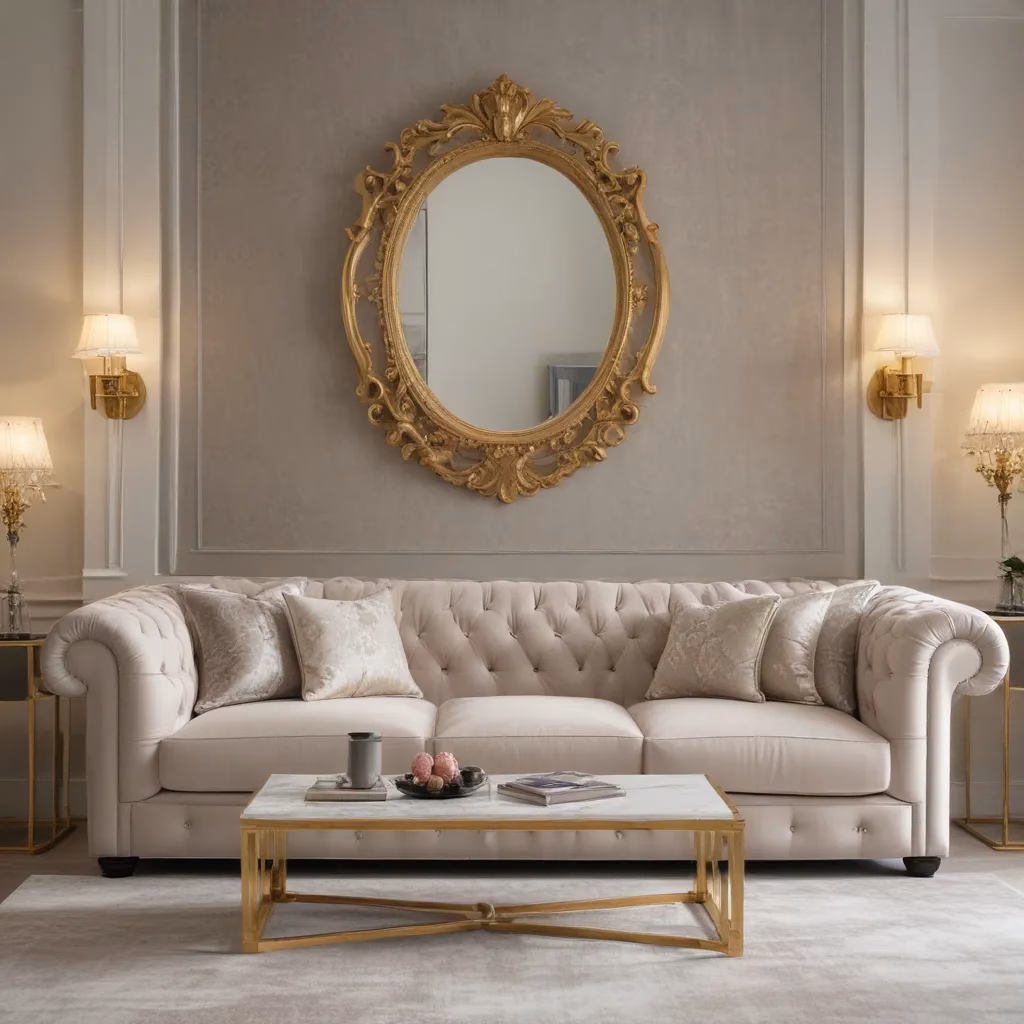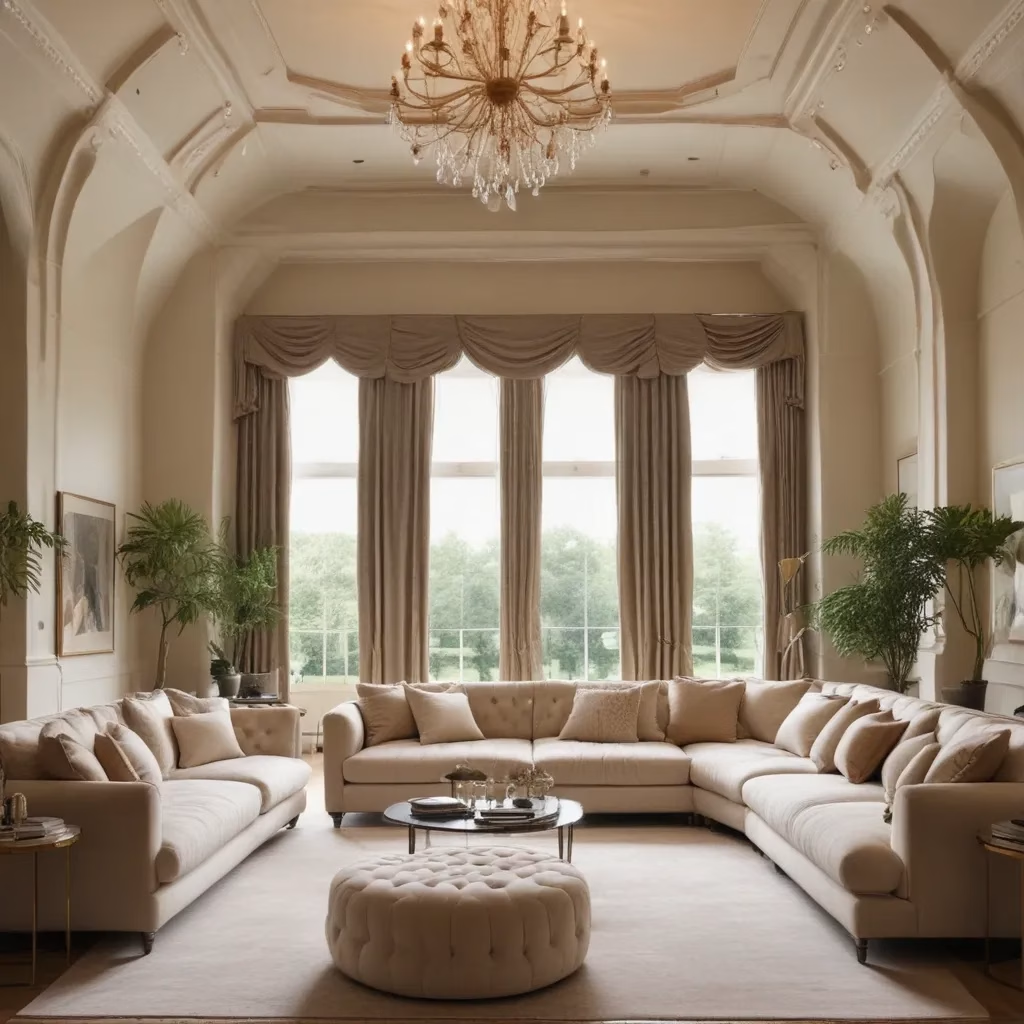
The Art of Furniture Arrangement
As a furniture specialist with years of experience, I’ve seen firsthand how the right arrangement can transform a space. It’s not just about placing sofas and chairs in a room; it’s about creating a harmonious environment that reflects your personal style and meets your functional needs. Have you ever walked into a room and felt immediately at ease, even if you couldn’t quite put your finger on why? Chances are, it was due to thoughtful furniture placement.
Furniture arrangement is a skill that combines both science and art. It requires an understanding of spatial relationships, traffic flow, and visual balance. But it also calls for a creative eye and an intuitive sense of what feels right in a space. Over the years, I’ve developed a keen sense for this, and I’m excited to share some of my insights with you.
One of the most critical aspects of furniture arrangement is considering the room’s purpose. Is it a living room meant for entertaining guests, or a cozy den for family movie nights? The function of the space should guide your decisions. For instance, in a living room, you might want to create conversation areas by positioning sofas and chairs to face each other. In a bedroom, the bed is typically the focal point, with other pieces arranged to complement it.
Understanding Your Space
Before you start moving furniture around, it’s essential to understand your space. This means more than just knowing the dimensions of your room. You need to consider the architectural features, such as windows, doors, and fireplaces. These elements can serve as natural focal points and should be factored into your arrangement.
I always recommend starting with a floor plan. You don’t need fancy software for this; a simple sketch on paper will do. Measure your room and draw it to scale. Then, measure your furniture pieces and create cutouts that you can move around on your plan. This allows you to experiment with different layouts without the physical exertion of moving heavy pieces.
When I work with clients, I often find they’ve overlooked the importance of negative space. This is the empty area around and between furniture pieces. Proper use of negative space can make a room feel more spacious and less cluttered. Don’t feel compelled to fill every corner; sometimes, less really is more.
Another crucial factor is traffic flow. How do people move through the space? You want to create clear pathways that allow easy movement without obstruction. I’ve seen many beautiful rooms rendered impractical because furniture blocked natural walking paths. Remember, a well-arranged room should not only look good but also function efficiently.
The Power of Focal Points
Every room needs a focal point – an element that naturally draws the eye and anchors the space. In many living rooms, this might be a fireplace or a large window with a view. In bedrooms, it’s often the bed. But what if your room doesn’t have an obvious architectural focal point?
This is where your creativity comes into play. You can create a focal point with a large piece of artwork, a statement piece of furniture, or even a well-styled bookshelf. I once worked with a client who had a rather plain living room. We transformed the space by creating a gallery wall with a collection of framed photographs and art pieces. This became the room’s focal point, and we arranged the furniture to complement it.
When you’ve identified or created your focal point, arrange your furniture to highlight it. In a living room, for example, you might position the sofa to face the focal point, with chairs angled towards it. This creates a sense of purpose in the room and guides the eye naturally.
Remember, though, that while a focal point is important, it shouldn’t dominate the space to the exclusion of everything else. The goal is to create a balanced room where all elements work together harmoniously.
Balancing Act: Symmetry vs. Asymmetry
When it comes to furniture arrangement, one of the key decisions you’ll face is whether to go for a symmetrical or asymmetrical layout. Both approaches have their merits, and the choice often depends on the style you’re aiming for and the specific characteristics of your space.
Symmetrical arrangements are classic and formal. They create a sense of order and calm in a room. Think of a traditional living room with matching sofas facing each other, flanked by identical end tables and lamps. This approach works well in formal spaces or rooms with strong architectural features that lend themselves to symmetry.
Asymmetrical layouts, on the other hand, can be more dynamic and interesting. They allow for more creativity and can make a space feel more relaxed and lived-in. An asymmetrical arrangement might feature a sofa on one side of the room balanced by two chairs on the other, with varying heights and shapes of accent pieces.
In my experience, a mix of both approaches often yields the best results. You might have a symmetrical arrangement of major pieces, like sofas, but introduce asymmetry with accent chairs or side tables. This creates a balanced look that’s neither too rigid nor too chaotic.
Scale and Proportion: The Golden Rules
One of the most common mistakes I see in furniture arrangement is ignoring scale and proportion. These principles are crucial for creating a cohesive and visually pleasing space. Scale refers to the size of an object in relation to the room, while proportion is about the size of objects in relation to each other.
A room with furniture that’s too large will feel cramped and overwhelming. Conversely, furniture that’s too small can make a space feel empty and unfinished. The key is to find pieces that fit comfortably within the room’s dimensions while leaving enough space for movement and negative space.
Proportion is about creating visual harmony between different pieces. For example, a large sectional sofa might be balanced by a substantial coffee table and a tall floor lamp. Smaller accent chairs could be paired with delicate side tables. The goal is to create a sense of balance and avoid having any one piece dominate the room.
I often advise clients to think in terms of visual weight. This isn’t just about the physical size of a piece, but also its color, texture, and design. A dark, heavily carved wooden cabinet might have more visual weight than a larger but lighter-colored and simpler piece.
The Role of Lighting in Furniture Arrangement
Lighting plays a crucial role in how we perceive and use a space, and it should be considered an integral part of your furniture arrangement plan. The right lighting can highlight your focal points, create ambiance, and make a room more functional.
When arranging furniture, think about both natural and artificial light sources. Position seating areas to take advantage of natural light for reading or conversation during the day. Consider how the sunlight moves through the room at different times and how this might affect comfort and glare on screens.
For artificial lighting, I recommend a layered approach. Start with ambient lighting – this could be overhead fixtures or wall-mounted lights that provide overall illumination. Then add task lighting for specific activities, like reading lamps near seating areas or under-cabinet lights in kitchens. Finally, accent lighting can highlight artwork, architectural features, or create a cozy atmosphere.
Remember that lighting fixtures themselves can be significant design elements. A statement chandelier or an eye-catching floor lamp can serve as a focal point or complement your existing arrangement.
Practical Tips for Different Room Types
Living Room Wisdom
The living room is often the heart of the home, where we entertain guests and relax with family. When arranging furniture in a living room, start by defining the primary function of the space. Is it primarily for conversation, watching TV, or both?
For conversation areas, create intimate groupings. Position sofas and chairs to face each other, close enough for comfortable conversation. A good rule of thumb is to keep seating pieces no more than 8 feet apart. If you have a large living room, consider creating multiple seating areas.
If the room is also used for watching TV, position seating at a comfortable viewing distance and angle. Be mindful of glare on the screen from windows or light fixtures. You might need to compromise between the ideal arrangement for conversation and TV viewing, but with some creativity, you can usually find a layout that works for both.
Bedroom Bliss
In bedrooms, the bed is naturally the focal point. The most common arrangement is to place the bed against the longest wall, centered if possible. This creates balance and maximizes floor space. If you have the luxury of space, consider floating the bed in the center of the room for a dramatic effect.
Nightstands should be easily accessible from the bed. They don’t have to match exactly, but they should be proportional to the bed and each other. A dresser or chest of drawers can be placed opposite the bed or on an adjacent wall.
If space allows, create a seating area with a comfortable chair or a small loveseat. This adds functionality to the room and can serve as a quiet reading nook or a place to put on shoes.
Dining Room Dynamics
In dining rooms, the table is the star. The size and shape of your table should be dictated by the room’s dimensions and the number of people you typically seat. Allow at least 36 inches between the edge of the table and the wall or other furniture to ensure comfortable movement.
Lighting is particularly important in dining rooms. A chandelier or pendant light centered over the table not only provides necessary illumination but also acts as a focal point. The bottom of the fixture should hang about 30-36 inches above the table surface for optimal lighting and visual appeal.
Consider adding a buffet or sideboard for storage and serving space. This can be placed along a wall, ideally not blocking any windows. If space allows, a bar cart can be a stylish and functional addition to a dining room.
Embracing Flexibility in Furniture Arrangement
While it’s important to have a well-thought-out furniture arrangement, don’t be afraid to experiment and change things up. Our needs and tastes evolve over time, and your furniture arrangement should reflect that. I always encourage my clients to be open to rearranging their spaces seasonally or even more frequently.
One way to build flexibility into your arrangement is to invest in versatile pieces. Modular sofas, nesting tables, and ottomans with hidden storage can be easily rearranged or repurposed as needed. Consider furniture on casters for easy movement, especially in smaller spaces.
Remember, the goal of furniture arrangement is to create a space that works for you. It should reflect your lifestyle, meet your functional needs, and make you feel comfortable and happy in your home. Don’t be bound by rules if they don’t serve your purposes.
The Impact of Color and Texture in Arrangement
While we’ve focused primarily on the physical placement of furniture, it’s important to note that color and texture play a significant role in how we perceive space and arrangement. These elements can affect the visual weight of pieces and influence the overall feel of a room.
Dark colors tend to make objects appear heavier and can make a space feel more intimate. Light colors, on the other hand, can make pieces seem lighter and spaces feel more open. When arranging furniture, consider the color palette of your room and how different pieces interact visually.
Texture adds depth and interest to a space. Mix different textures to create a rich, layered look. For example, a smooth leather sofa might be paired with a nubby wool rug and silky throw pillows. This not only adds visual interest but also creates a tactile experience that makes a room feel more inviting.
Technology and Furniture Arrangement
In today’s digital age, technology plays an increasingly important role in our homes, and this should be reflected in our furniture arrangements. Consider the placement of TVs, computers, and charging stations when planning your layout.
Cable management is an often-overlooked aspect of furniture arrangement. Plan for ways to hide or minimize visible cords and wires. This might involve positioning furniture to conceal outlets or investing in cable management solutions.
Smart home devices like speakers or smart displays should be positioned for optimal performance and convenience. For example, a smart speaker might be placed on a side table near a seating area for easy access to voice commands.
The Importance of Personal Style
While there are many principles and guidelines for effective furniture arrangement, it’s crucial to inject your personal style into your spaces. Your home should reflect your personality and tastes. Don’t be afraid to break rules if it means creating a space that feels authentically you.
I’ve worked with clients who have unique collections or hobbies, and we’ve found creative ways to incorporate these into their furniture arrangements. Whether it’s displaying a vinyl record collection in the living room or creating a cozy reading nook for a book lover, your personal interests can and should influence your furniture arrangement.
Conclusion: Creating Your Perfect Space
Arranging furniture for maximum impact is both an art and a science. It requires a blend of practical knowledge, creative vision, and an understanding of your own needs and preferences. By considering factors like focal points, balance, scale, and functionality, you can create spaces that are not only beautiful but also comfortable and practical.
Remember, there’s no one-size-fits-all solution when it comes to furniture arrangement. What works in one home may not work in another. The key is to experiment, be open to new ideas, and most importantly, create spaces that you love living in.
As you embark on your furniture arrangement journey, don’t hesitate to seek inspiration from various sources. Interior design magazines, online platforms, and even furniture showrooms can provide valuable ideas. But ultimately, trust your instincts and create arrangements that feel right to you.
If you’re looking for quality pieces to perfect your furniture arrangement, I highly recommend checking out Sofa Spectacular. They offer a wide range of stylish and comfortable sofas that can serve as the centerpiece of your living room arrangement.
With these principles and tips in mind, you’re well-equipped to transform your spaces through thoughtful furniture arrangement. Happy arranging!



